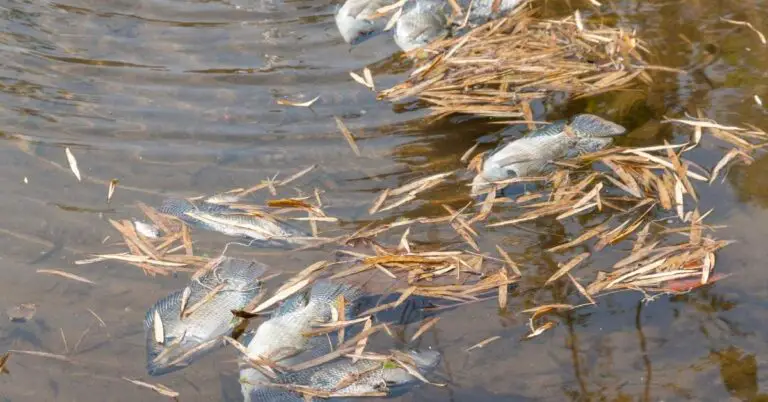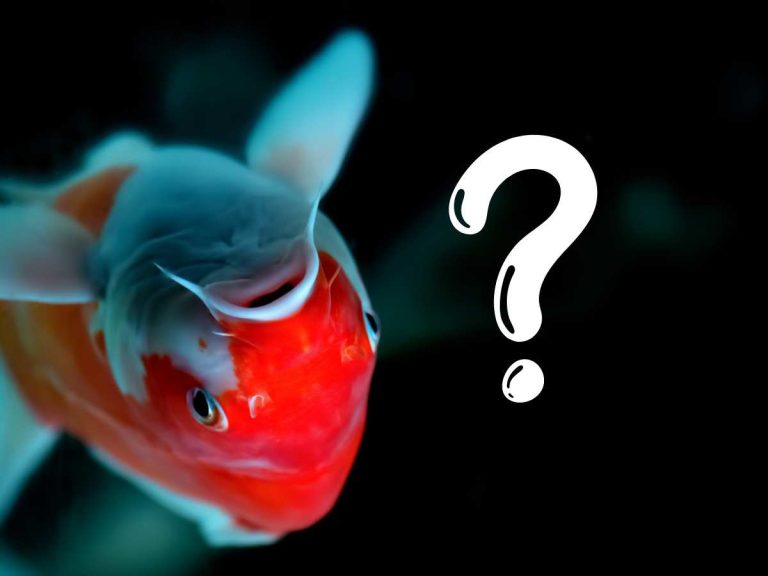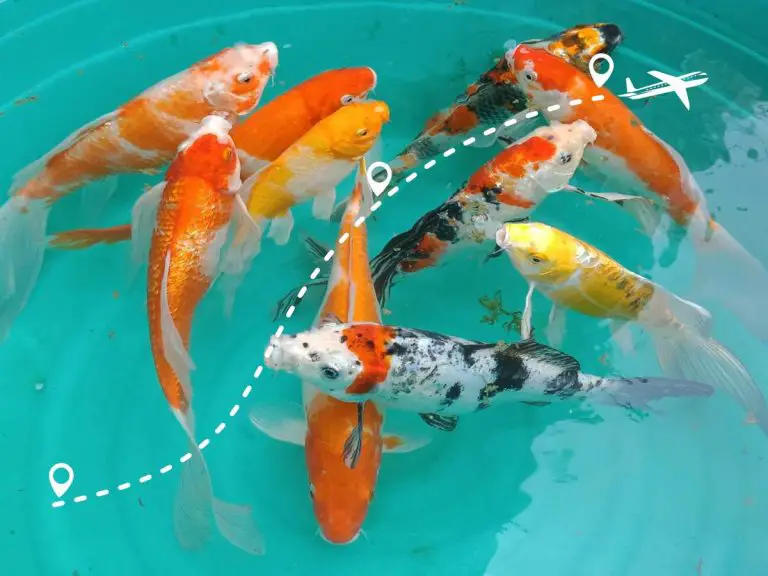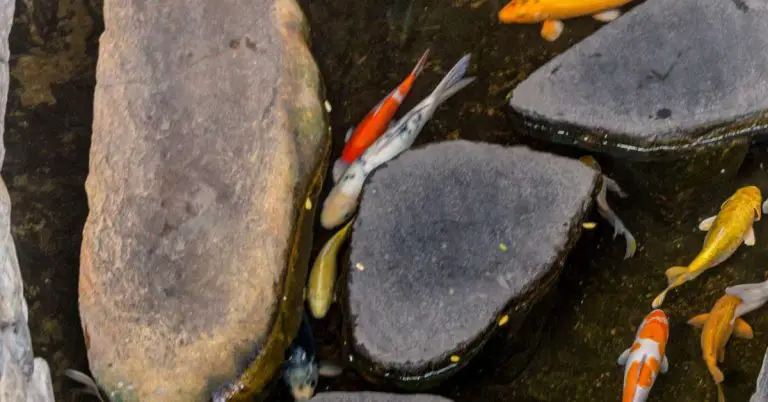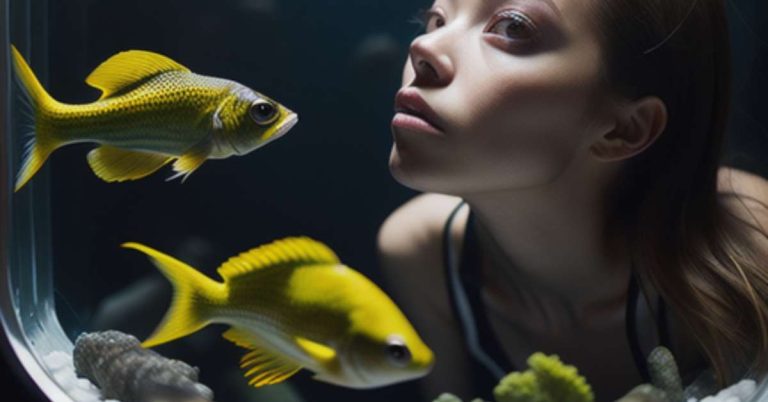Discover the Best Koi Fungus Treatment: Prevent and Cure Fungal Infections
Koi fish, revered for their beauty and grace, are unfortunately susceptible to various health issues, one of which is fungal infections. These infections can mar the appearance of koi and, more importantly, pose significant health risks. Understanding the nature, causes, and signs of fungal infections in koi is crucial for any pond owner or enthusiast.
While all varieties of koi fish are undoubtedly resilient, they are not immune to the challenges posed by fungal infections. By understanding the nature of these infections, their causes, and symptoms, koi owners can take proactive measures to ensure the health and longevity of their prized fish.
Keep reading to understand more about koi fungus, as well as how to spot it, treat it, prevent it, and more.
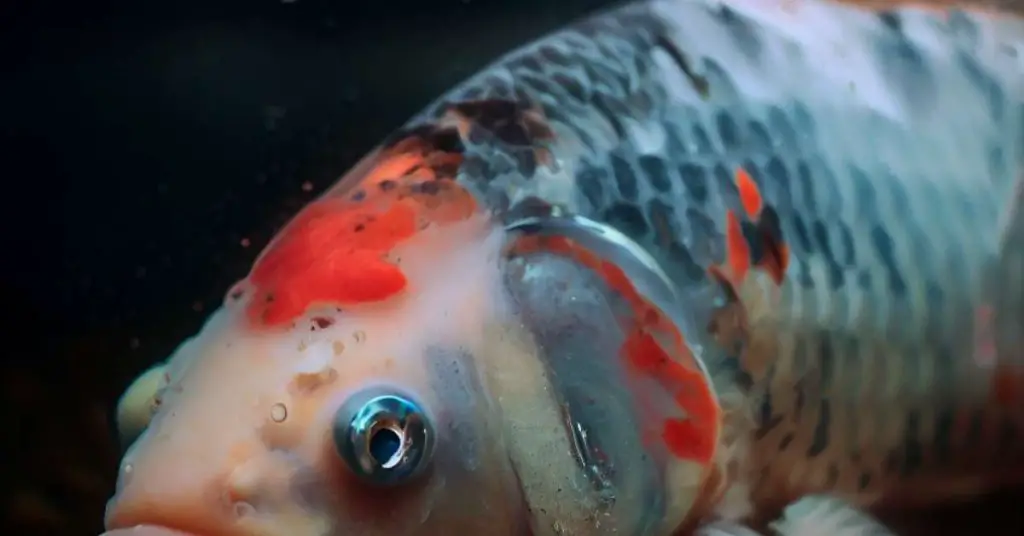
Understanding Koi Fish Fungus
Fungal infections in koi ponds are often caused by fungi that naturally exist in most waters. Two prominent fungi that frequently affect koi are Saprolegnia and Achlya. While these fungi are generally harmless in well-maintained ponds and even play a role in breaking down decaying matter, they become problematic when they find an opportunity to infect.
| Aspect | Details |
|---|---|
| Main Fungi | Saprolegnia, Achlya |
| Nature of Infection | Typically secondary infections, attacking compromised areas like wounds or damaged skin. |
| Symptoms | White, cotton-like tufts on the fish’s body. Can also be brown, black, or gray. |
| Underlying Causes | Poor water management, overcrowding, stress, drastic changes in pH levels or water temperature. |
| Contagiousness | Many fungal infections, especially those caused by the Saprolegniaceae family, are contagious. |
| Self-Resolution? | No. Fungal infections require intervention. |
Secondary Fungal Infections
It’s essential to note that fungal diseases in koi are typically secondary infections. This means that the fungi attack areas already compromised, perhaps by a wound, parasite, or another external factor. For instance, Saprolegnia often grows on damaged skin, fins, or gills. Similarly, mold targets dead eggs, turning them white before enveloping them in a fur-like growth. If such infected eggs aren’t promptly removed, the fungus can spread to neighboring eggs.
Symptoms and Diagnosis
Early detection is the key to managing and treating fungal infections. The most evident sign of a fungal infection is the appearance of white, cotton-like tufts on the fish’s body. However, these tufts can sometimes take on other colors, such as brown, black, or gray. In the infection’s initial stages, only a few strands might be visible, but these can grow over time, forming the characteristic cotton-like tufts. If left unchecked, severe fungal infections can cover large body areas, leading the fungus to attack the koi internally, causing irreversible damage to its organs.
Underlying Causes
One of the critical aspects of understanding koi fungus is recognizing the underlying causes. Fungal infections often result from poor water management. Overcrowding, suboptimal water conditions, and stress can also weaken koi, making them more susceptible. Moreover, drastic changes in pH levels or water temperature can induce stress, increasing the risk of infections.
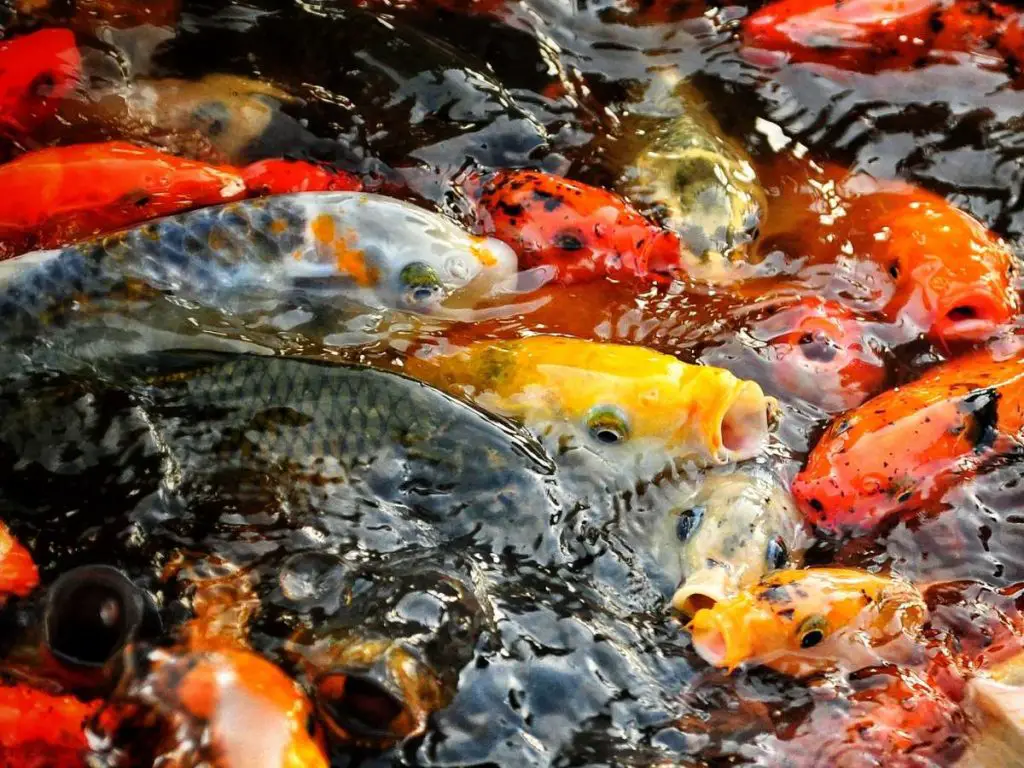
Addressing the Root Cause of Fish Fungus
Before diving into treatments, it’s imperative to identify and rectify the root causes. If the water quality is poor or if the pond is overcrowded, merely treating the symptoms won’t prevent future outbreaks. Regular pond maintenance, including cleaning and replacing filters, can go a long way in ensuring a healthy environment for koi.
Regular observation, prompt action, and maintaining optimal pond conditions are the cornerstones of preventing and managing fungal infections in koi.
Will Fish Fungus Go Away by Itself?
The simple answer to the question of whether fish fungus will go away by itself is “No.”
Fish fungus, particularly the types that affect koi, is a serious concern that requires attention. Left untreated, fungal infections can lead to severe complications and even death for the affected fish.
In short, fungal infections are not self-resolving. They necessitate intervention, either through improving pond conditions, administering treatments, or both. Simply hoping for the fungus to disappear on its own can lead to the deterioration of the fish’s health and potential spread of the infection to other fish in the pond.
It’s crucial for pond owners to be proactive in addressing any signs of fungal infections in their fish. Early detection and treatment can make a significant difference in the outcome and overall health of the pond ecosystem.
Can Koi Fish Fungus Be Contagious?
Koi fish fungus, particularly those caused by the Saprolegniaceae family of freshwater molds, can indeed be contagious. These fungi thrive in various water conditions, including a wide range of pH levels, temperatures, and even high salinity. However, sudden and lasting changes in water quality can facilitate the growth of these fungi.
Like we’ve covered, the most common fungal infections in koi are caused by the Saprolegnia species, also known as the cotton wool disease. This fungus manifests as cotton-like growths on the fish, appearing on scales, fins, gills, and even as mouth fungus. If one fish in a pond is affected, there’s a risk that the fungus can spread to other fish, especially if the water conditions are conducive to fungal growth.
Another fungus-like organism, Dermocystidium, though not a true fungus, can also be contagious. The species Dermocystidium koi is responsible for infecting koi specifically. While it isn’t typically fatal, it causes painful skin lesions that can weaken the fish and make them susceptible to secondary infections. Transmission occurs when the zoospores of D. Koi, which are free-floating freshwater organisms, come into contact with the gills or an open wound of a fish.
Lastly, while Ichthyophonus (ie: Ich) is not a mold or fungus, it’s often grouped with them due to its similar symptoms in fish. Ichthyophonus hoferi can lead to the disease ichthyophoniasis. Once a fish is infected, even if symptoms disappear, the fish remains a carrier for life and can potentially infect other fish. Transmission in koi seems to occur mainly through ingestion of carrier or actively infected fish.
In summary: while not all fungal infections are contagious, many are, and it’s crucial to treat affected fish promptly and maintain optimal water conditions to prevent the spread of these infections.
Consulting a Fish Veterinarian For Fungus: When and Why
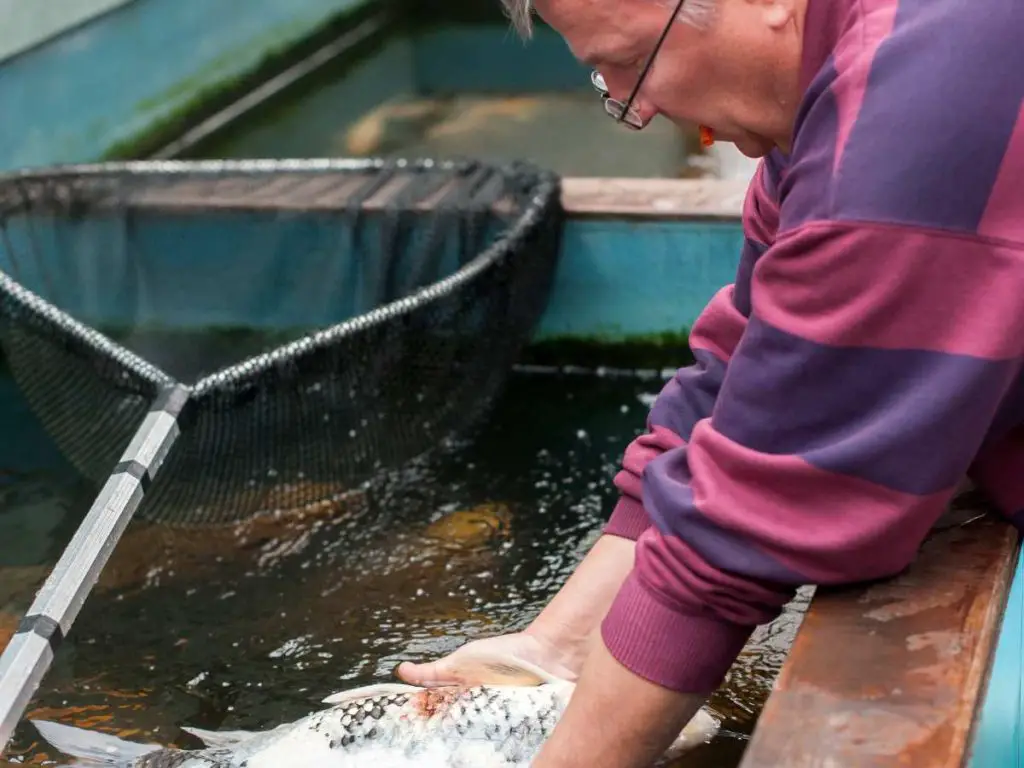
While many koi enthusiasts have a good grasp of basic pond maintenance and fish care, there are instances when professional intervention becomes necessary. Recognizing when to consult a veterinarian can make the difference between a minor health hiccup and a full-blown crisis.
Persistent Infections: If you’ve tried recommended treatments and the fungal infection persists or worsens, it’s time to seek expert advice. A veterinarian can provide a more accurate diagnosis and might suggest specialized treatments not readily available over the counter.
Multiple Fish Affected: If several fish in your pond exhibit signs of fungal infections simultaneously, it could indicate a more severe underlying issue. A vet can help identify if it’s a contagious strain or if environmental factors are causing the widespread infection.
Secondary Symptoms: Fungal infections can sometimes be accompanied by other symptoms, such as erratic swimming, loss of appetite, or rapid breathing. These could indicate other underlying health issues that require a vet’s expertise.
Preventive Care: Even if your koi don’t show signs of fungal infections, regular check-ups with a vet specializing in aquatic animals can be beneficial. They can provide insights into preventive care, ensuring that your fish remain healthy and vibrant.
Expertise on Medications: Over-the-counter treatments can sometimes interact with other medications or treatments you might be using in your pond. A vet can guide you on the safe use of multiple treatments and suggest dosages tailored to your koi’s specific needs.
Post-Infection Care: After a fungal outbreak, a vet can offer guidance on recovery care, ensuring that your koi regain their strength and are less likely to suffer a recurrence.
In essence, while many fungal infections can be treated with standard remedies, there are situations where a veterinarian’s expertise is invaluable. Building a relationship with a trusted aquatic vet ensures that you have a professional to turn to, whether it’s an emergency or just routine care. Remember, the goal is not just to treat infections but to create an environment where they’re less likely to occur in the first place.
How Do You Treat Koi Fungus? 4 Effective Fungus Treatment Methods
| Treatment/Prevention Method | Details |
|---|---|
| Quarantine Treatment | Isolate infected fish in a quarantine tank with the same water temperature as the main pond for about a week. |
| Salt Treatments | Use a 1% salt solution in the quarantine tank. Increase to 2% if necessary. |
| Medical Treatment | Feed medicated food or apply hydrogen peroxide directly to infected areas. |
| Maintaining Water Quality | Clean the pond regularly, replace old filters, and monitor pH levels. |
| Avoid Overcrowding | Ensure each fish has enough space to move freely. |
| Quarantine New Fish | Keep new fish in a separate tank for at least a week before introducing them to the main pond. |
| Regular Observation | Monitor koi daily for signs of stress, illness, or unusual behavior. |
| Maintain Stable Water Temperature | Use heaters or coolers to keep the water temperature stable. |
| Healthy Diet | Feed koi a balanced and nutritious diet to boost their immune system. |
| Regular Pond Checks | Check the pond for damage, leaks, or malfunctioning equipment. |
The good news: while fungal infections in koi can be concerning, they are treatable. The key is early detection, prompt action, and maintaining optimal water conditions.
Whether you opt for natural remedies like salt treatments or medical interventions, always prioritize the well-being of your koi. With proper care and attention, your koi can recover fully and continue to thrive in their aquatic home.
Here are four proven treatment methods to combat koi fungus:
- Quarantine Treatment:
- Isolation: As soon as you notice signs of a fungal infection, such as irregular white spots or growths, it’s essential to separate the infected fish from the rest of the population. This prevents the spread of the disease to other koi.
- Quarantine Tank: Place the affected fish in a quarantine tank that maintains the same water temperature as the main pond. This ensures minimal stress during the transition. Ideally, the fish should remain in quarantine for about a week. In many cases, isolation and time alone can help combat early-stage fungal infections.
- Salt Treatments:
- Effectiveness: Salt is a natural remedy that can be effective against fungus. It’s essential to use this treatment only in the quarantine area, as salt can be harmful to water plants in the main pond.
- Procedure: Start with a 1% salt solution in the quarantine tank and maintain it for a week. If the fungus persists, you can increase the salt concentration to 2% for a short duration (about 30 minutes). After the salt treatment, monitor the fish for several days in the quarantine tank to ensure the fungus doesn’t return before reintroducing it to the main pond.
- Medical Treatment:
- Medicated Food: If neither isolation nor salt treatments prove effective, it might be time to consider medical interventions. One option is to feed the koi medicated food specifically designed to treat fungal infections. This ensures the fish receives the medication internally.
- Topical Treatment: Another method involves using a cotton swab to apply hydrogen peroxide directly to the infected areas. This can help kill and contain the fungus. However, it’s crucial to handle the fish gently, use a soft net, and minimize the time the fish spends out of the water to reduce stress.
- Maintaining Water Quality:
- Root Cause: Often, fungal infections in koi are a result of suboptimal water conditions. Regularly cleaning your pond and replacing old filters can significantly improve water quality.
- Population Control: Overcrowding can stress fish, weakening their immune systems and making them more susceptible to diseases. Ensure your pond isn’t overpopulated.
- Water Parameters: Regularly monitor the pH levels of your pond water. Aim to maintain a pH level of around 7. Avoid making drastic changes to the pH or water temperature, as sudden changes can stress the fish.
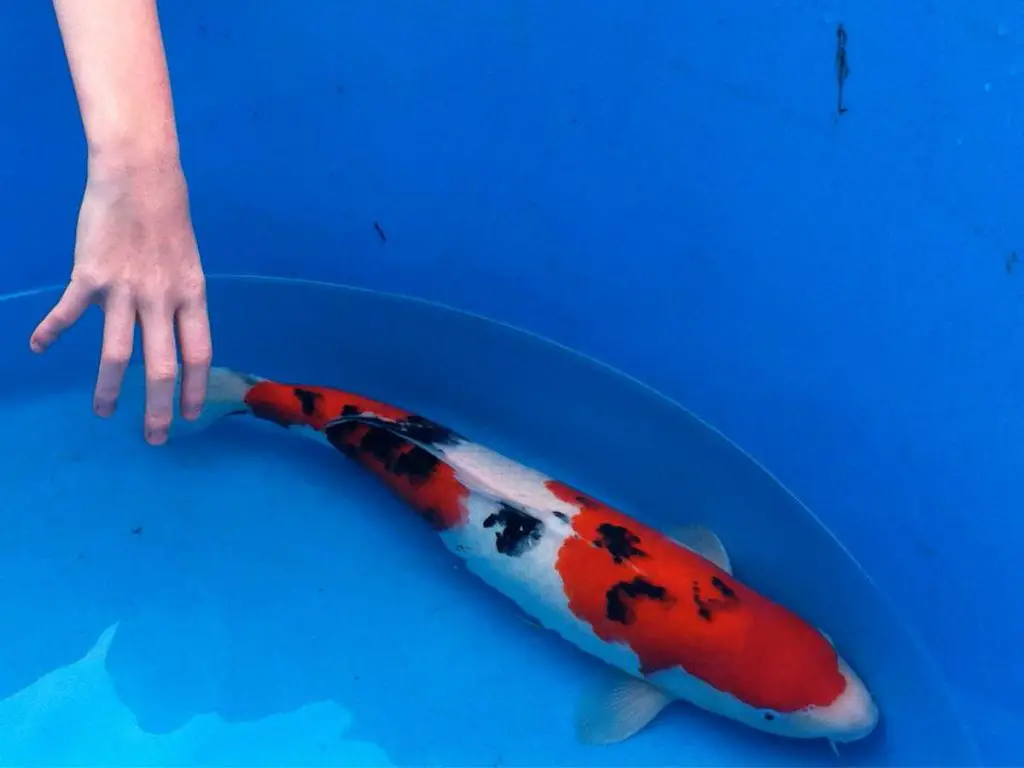
Prevention Techniques for Koi Fish Fungus
Preventing fungal infections in koi fish is always better than treating them. By maintaining a healthy environment and following best practices, you can significantly reduce the chances of your koi contracting a fungal infection.
Here are some effective prevention techniques based on the information gathered from the provided sources:
- Maintain Water Quality:
- Regular Cleaning: One of the primary causes of fungal infections in koi fish is poor water quality. Ensure that you clean your pond regularly to remove debris, uneaten food, and other contaminants.
- Filter Replacement: Old and worn-out filters can compromise water quality. Make it a habit to replace or clean filters regularly to ensure they function efficiently.
- Monitor pH Levels: Aim to maintain a pH level of around 7 in your pond. Drastic changes in pH or water temperature can stress your koi, making them more susceptible to infections.
- Avoid Overcrowding:
- Overcrowding can lead to increased stress among fish, weakening their immune systems and making them more vulnerable to diseases. Ensure that your pond has enough space for each fish to move freely.
- Quarantine New Fish:
- Before introducing new fish to your pond, keep them in a separate quarantine tank for at least a week. This allows you to observe them for any signs of disease and prevents the potential spread of infections to your existing fish population.
- Note: many reputable online sellers of koi will pre-quarantine new fish for you.
- Regular Observation:
- Monitor your koi daily for any signs of stress, illness, or unusual behavior. Early detection of symptoms can help in timely intervention and treatment.
- Maintain Stable Water Temperature:
- Sudden changes in water temperature can stress koi fish. Use heaters or coolers as necessary to keep the water temperature stable, especially during seasonal transitions.
- Avoid Drastic Changes:
- Whether it’s the pH level, water temperature, or any other water parameter, avoid making sudden and drastic changes. Gradual adjustments are less stressful for the fish.
- Reduce Stress:
- Stress is a significant factor that can weaken a koi’s immune system. Ensure that your pond environment is calm, with minimal disturbances. This includes avoiding sudden loud noises, rapid water movements, or frequent handling of the fish.
- Healthy Diet:
- Feed your koi a balanced and nutritious diet. A healthy diet boosts their immune system, making them less susceptible to infections.
- Regular Pond Checks:
- Periodically check your pond for any signs of damage, leaks, or malfunctioning equipment. A well-maintained pond reduces the chances of infections.
- Avoid Contaminated Sources:
- Be cautious about introducing plants, water, or any other items from unknown or potentially contaminated sources. Always ensure that anything you add to your pond is clean and disease-free.
Remember, prevention is the key to keeping your koi fish healthy and free from fungal infections. By following the above techniques and maintaining a vigilant eye on your pond and its inhabitants, you can ensure a thriving and disease-free environment for your beloved koi.
10 Common Mistakes to Avoid For Treating Or Preventing Koi Fungus
Koi fish are not just beautiful additions to ponds and water gardens; they are living creatures that require proper care and attention. When it comes to treating or preventing fungal infections in koi, there are several common mistakes that many pond owners make. Being aware of these pitfalls can help ensure the health and well-being of your koi.
- Neglecting Quarantine: One of the primary steps when you notice a fungal infection in a koi is to quarantine the affected fish. Failing to do so can lead to the spread of the fungus to other fish in the pond. Always have a separate quarantine tank ready, with the same water temperature as the main pond, to isolate infected fish.
- Overlooking Water Quality: Fungal infections often arise due to poor water quality. Not cleaning the pond regularly, failing to replace old filters, or neglecting water parameters can lead to a conducive environment for fungal growth. Regularly monitor and maintain the water quality, ensuring parameters like pH are at optimal levels.
- Overpopulating the Pond: A crowded pond can lead to increased stress among the fish, weakening their immune systems and making them more susceptible to infections. Ensure that your pond is not overpopulated and that each fish has enough space to move freely.
- Making Drastic Changes: Whether it’s the pH level or the water temperature, sudden and drastic changes can stress koi fish, making them more vulnerable to fungal infections. Always introduce changes gradually and monitor the fish for signs of stress.
- Relying Solely on Salt Treatments: While salt treatments can be effective against fungus, they should not be the only line of defense. Over-relying on salt can harm water plants and might not be effective against advanced infections. It’s essential to consider other treatments, like medicated food or hydrogen peroxide applications, especially if the infection persists.
- Ignoring Early Signs: Early detection is crucial in treating fungal infections. Ignoring or overlooking early signs like white cotton-like patches or fuzzy growth can lead to more severe infections that are harder to treat. Regularly observe your koi for any abnormalities.
- Using the Wrong Medication: Not all fungal treatments are created equal. Using the wrong medication or not following the recommended dosage can lead to ineffective treatment and can even harm the fish. Always consult with a vet or a koi expert before administering any medication.
- Not Monitoring After Treatment: After treating a fungal infection, it’s essential to monitor the fish to ensure the fungus does not return. Simply treating and then ignoring can lead to recurrent infections.
- Introducing New Fish Without Quarantine: Whenever you introduce new fish to your pond, always quarantine them first. New fish can carry pathogens, including fungus, which can infect the existing population.
- Not Seeking Expert Advice: If you’re unsure about a fungal infection or its treatment, always seek advice from a koi expert or veterinarian. They can provide guidance on the best course of action and recommend effective treatments.
Proper Koi Fish Care Practices
Koi fish, with their vibrant colors and graceful movements, are a popular choice for backyard ponds. However, like all living creatures, they require specific care to thrive.
Proper care not only ensures the health and longevity of the koi but also helps prevent issues like the “Cotton Wool” fungus we’ve been discussing.
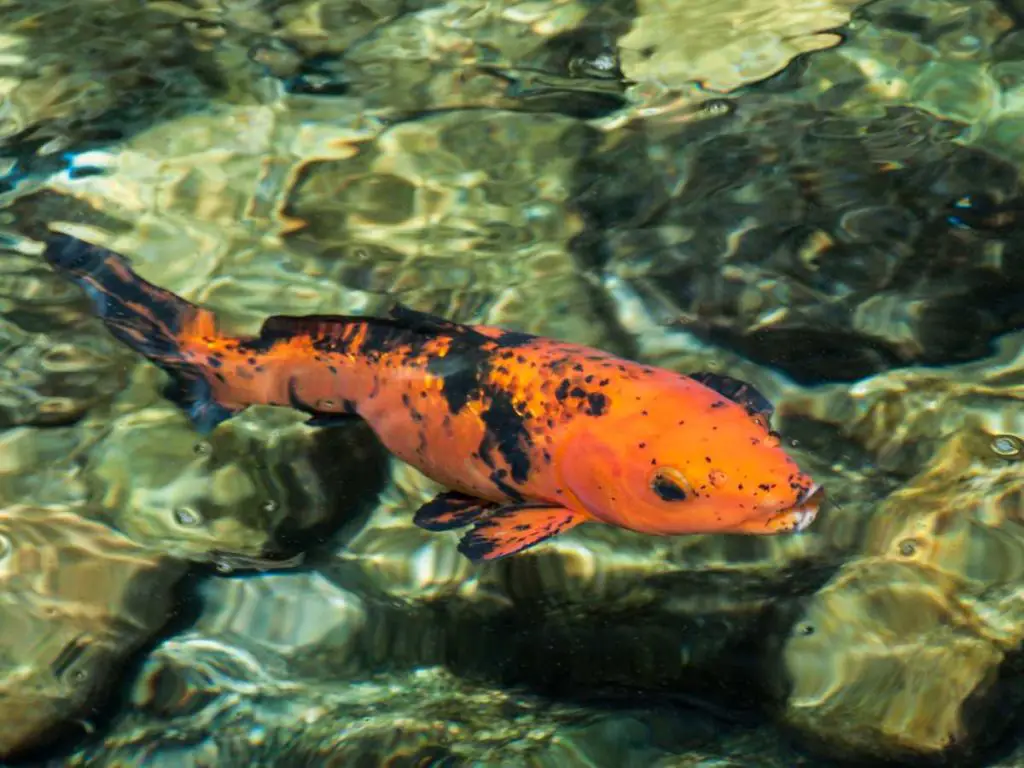
Here are some essential care practices for koi fish:
- Water Quality: The foundation of koi health lies in the quality of the water they live in. Poor water quality can stress koi, making them susceptible to diseases like the “Cotton Wool” fungus. Ensure that the water is free from harmful chemicals and pollutants. Regularly test the water for ammonia, nitrites, and pH levels.
- Avoid Overcrowding: Overcrowding can lead to reduced oxygen levels and increased waste, both of which can stress koi and lead to diseases. Ensure that your pond has adequate space for the number of koi you have. If you notice signs of overcrowding, consider relocating some fish or expanding your pond.
- Feeding: Overfeeding can result in uneaten food, which decomposes and deteriorates water quality. Feed your koi a balanced diet and avoid overfeeding. It’s better to feed them in small amounts multiple times a day rather than a large quantity once.
- Regular Pond Maintenance: Regularly clean the pond to remove debris, uneaten food, and algae. Ensure that the filtration system is working efficiently. Consider partial water changes to improve water quality.
- Check for Diseases: Always be on the lookout for signs of diseases or stress in your koi. The earlier you detect a problem, the easier it is to treat. For instance, the “Cotton Wool” fungus manifests as a fur-like growth on the koi’s skin. If you notice such signs, take immediate action.
- Treatment: If a koi is affected by a disease like the “Cotton Wool” fungus, it’s crucial to treat it promptly. One effective treatment is using methylene blue, a dye commonly used as a fish medication. However, for faster results, consider treating each affected koi individually in a quarantine tub. You can remove the patches of fungus with a cotton swab and then apply treatments like malachite green (a fungicide) and propolis (an antibiotic and topical treatment).
- Quarantine New Fish: Before introducing new koi to your pond, quarantine them for a few weeks. This helps ensure they don’t introduce diseases to your existing fish population.
- Provide Shelter: Koi need shelter from predators and extreme weather conditions. Ensure your pond has areas where koi can hide, like underwater caves or dense plantings.
- Aeration: Ensure your pond has adequate aeration. Oxygen is vital for koi health, and a well-aerated pond can support a larger number of fish.
- Stay Informed: Continuously educate yourself about koi care. The more you know, the better equipped you’ll be to handle any challenges that come your way.
Ultimately, proper koi care is a blend of proactive measures and timely interventions. By maintaining optimal water quality, feeding appropriately, and regularly monitoring your koi’s health, you can prevent issues like the “Cotton Wool” fungus and ensure your koi live a long, healthy life.
Remember, a well-cared-for koi pond is not only a joy to behold but also a testament to the dedication and love of the owner.
Additional Tips for Maintaining Koi Fish Health
1. Importance of quarantine periods for new fish
When it comes to introducing new fish to your koi pond, it’s crucial to implement a quarantine period. This helps prevent the spread of potential diseases or parasites to your existing fish population. Quarantine tanks or ponds should be set up separately and monitored closely for any signs of illness or stress in the new fish.
2. Regular water changes and pond maintenance
Regular water changes are vital for maintaining a healthy pond environment for your koi fish. Aim for partial water changes of about 10-20% every 1-2 weeks to ensure optimal water quality. Additionally, proper pond maintenance, such as removing debris and cleaning filters, plays a crucial role in preventing the buildup of harmful bacteria and other contaminants that can negatively impact your fish’s health.
3. Minimizing stress and ensuring proper nutrition
Stress can weaken your koi fish’s immune system, making them more susceptible to fungal infections and other illnesses. To minimize stress, it’s essential to create a calm and peaceful environment in your koi pond. This can be achieved by providing adequate hiding places, maintaining the ideal temperature and water conditions, and avoiding overcrowding.
Proper nutrition is also key to keeping your koi fish healthy and resilient against fungal infections. Ensure that you are providing a balanced and nutritious diet that includes high-quality fish food, as well as occasional treats like fruits and vegetables. Consider adding immune-boosting supplements or probiotics to their diet for an added protective measure.
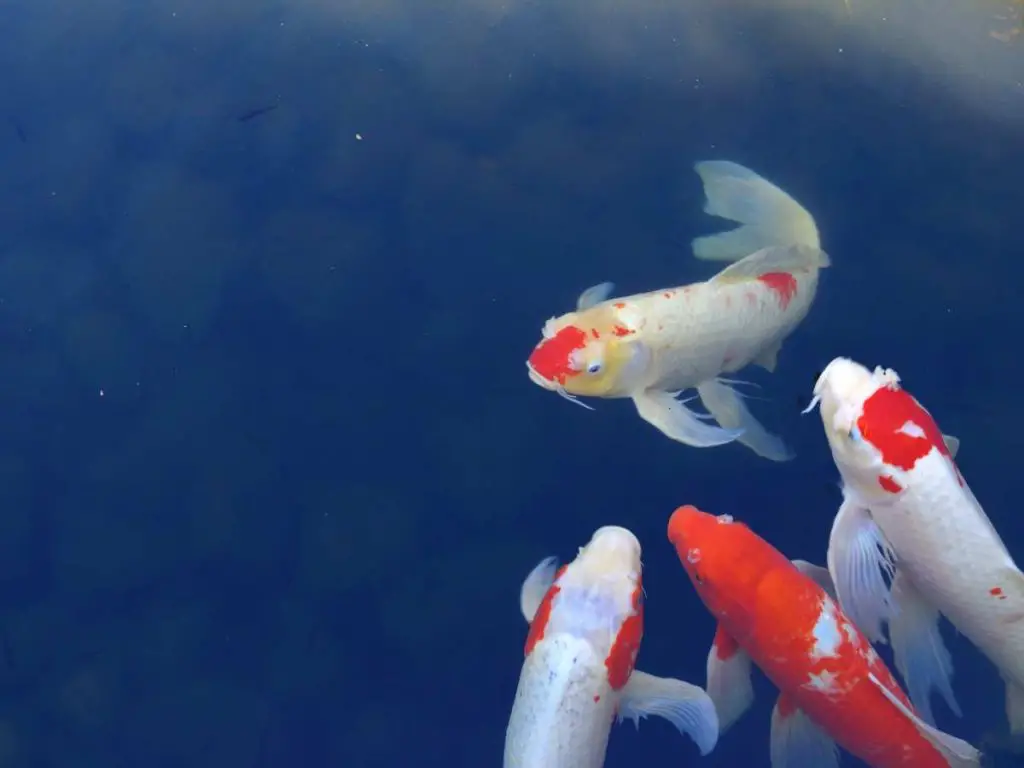
Final Thoughts
Through this comprehensive guide, we’ve delved into the intricacies of koi fish fungus, its treatment, prevention, and the broader spectrum of proper koi care.
Understanding the nature of fungal infections, recognizing early signs, and implementing effective treatment methods are paramount. Equally vital is the emphasis on prevention, which not only safeguards the health of individual koi but also ensures the overall well-being of the entire pond ecosystem. By avoiding common mistakes and adhering to best care practices, koi enthusiasts can ensure their fish thrive in a healthy environment.
In the ever-evolving world of koi care, continuous learning and staying updated with the latest research and best practices are essential. As we conclude, remember that the health and beauty of your koi fish are a testament to the care and dedication you invest in them. By prioritizing their well-being, you not only enhance their lifespan but also enrich the aesthetic and therapeutic value they bring to your space.
Related Questions
What does fungus look like on koi fish?
Fungus on koi fish appears as white, cotton-like patches or fuzzy growths on the fish’s body, fins, or gills. These patches can resemble tufts of cotton wool and may be accompanied by redness or inflammation in the affected areas.
What is the white fungus on koi fins?
The white fungus on koi fins is a fungal infection caused by organisms like Saprolegnia or Achlya. It manifests as white, cottony growths on the fins, resembling tufts of cotton wool. If left untreated, it can spread to other parts of the fish and lead to more severe health issues.
How long does it take for koi fish fungus to heal?
The healing time for koi fish fungus can vary depending on the severity of the infection and the effectiveness of the treatment. With proper care and early intervention, most fungal infections can be treated within a few weeks. However, it is crucial to continue the treatment until all signs of the fungus are completely gone to prevent a relapse.

